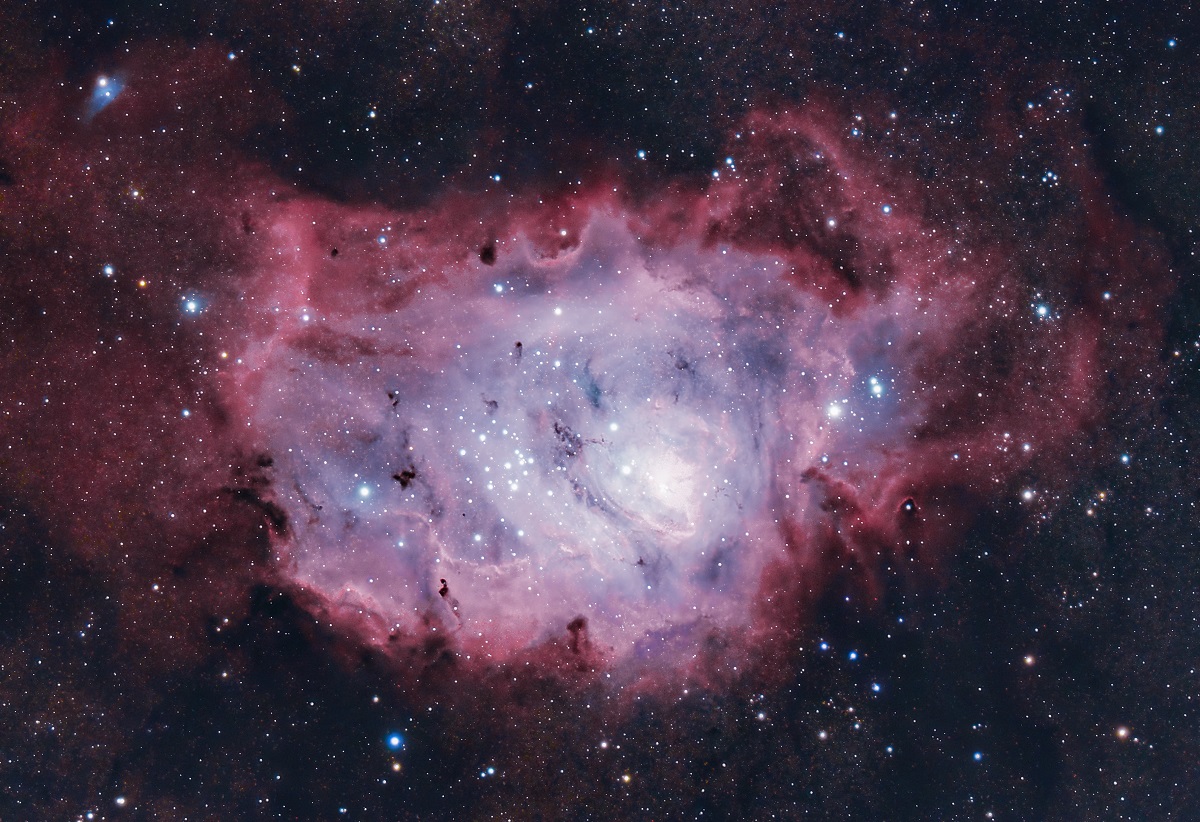[ad_1]
Storing telescopes, mounts, tripods and cameras inside their home, the couple takes out all the heavy equipment to their backyard to try and capture an element in our universe not seen by the naked eye. This method of photography is called astrophotography — it goes beyond landscape photography to use a combination of lenses, computers and telescopes to capture a moment in deep space.
“You can go out in the summer and set up a tripod and a camera and a wide angle lens and do a long exposure … and get to see the stars in the Milky Way in the core and some beautiful details of the sky,” Marcus explained. “I would say the biggest difference between that and deep space astrophotography is with deep space astrophotography, you’re looking way closer in on a target.”
To do that, Marcus and Miles must understand and keep track of what is happening in the sky above and when. Then given those parameters, they pick a target or two for the night, set up their equipment to get it polar aligned and then take long-exposure pictures for as long as possible — often lasting throughout the whole night.

The idea is to capture a series of long-exposure images, which invite more light into the lens, to gather as much visual data as possible. Marcus and Miles’ equipment keeps them on the target throughout the night as the subject moves across the sky. The series of photos, which will be later layered on top of each other, add more detail to the image.
As one might imagine, this hobby isn’t best served by partial commitment.
“If you meet anybody in the astro[photography] community, they’re going to talk about the time that they spent on this,” said Marcus with a smile.
On top of the time it takes to capture the images overnight, it takes about an hour to set up the equipment and a little bit less than that to take it down. While a lot of technology helps Marcus and Miles, they still must constantly check on the equipment throughout the night.
“We got up to the observatory property last Friday night at about 7:00 and we left the next morning at 7:30. So, we were there for 12 and a half hours,” said Marcus.
Marcus and Miles often take the deep space photos from just their backyard, but they also have connected with a person who has an observatory near Florissant, about 11 miles west of Pikes Peak. There they have access to power to operate their equipment, and it’s under a dark sky protected area and at high elevation. These conditions give Marcus and Miles an even better chance of capturing the beauty of the stars above.
“When I go to a dark sky and I look up and I see these things, these stars, these brighter stars, it’s like I reaffirm that they’re still there as am I. Me and the universe, we’re on the same terms,” said Marcus.
When Marcus returns to inside her home, she then has the immense task of stacking the images and pulling out the beauty from them. A single image can look like a smattering of stars, but as she is able to put several images together, nebulas, galaxies and other targets really start to take shape.
[ad_2]
